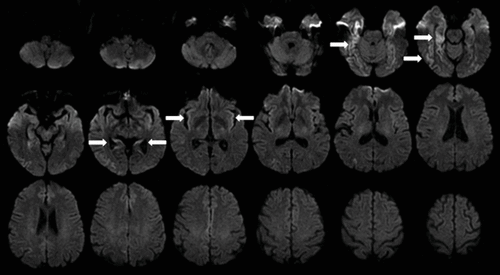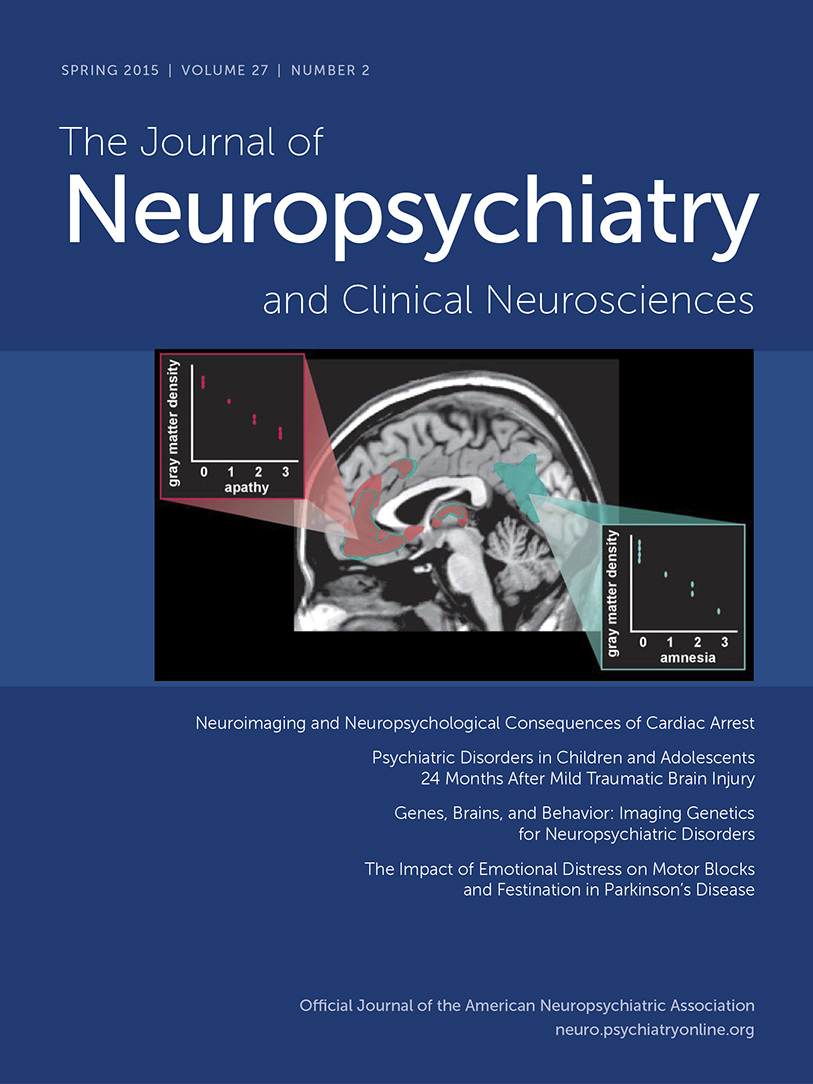Unusual Case of Sporadic Creutzfeldt–Jakob Disease Subtype VV1
To the Editor: Creutzfeldt–Jakob disease is characterized by a variety of symptoms, including rapidly progressive dementia, ataxia, and myoclonus. Sporadic Creutzfeldt–Jakob disease (sCJD) has a median disease duration of 6 months.1 Seven different molecular subtypes of sCJD have been identified (MM1, MM2-C, MM2-T, MV1, MV2, VV1, and VV2), based on prion protein gene (PRNP) codon 129 polymorphism and the prion protein type.2 VV1 is the rarest molecular subtype of sCJD (only about 1% of cases). To date, reported cases of sCJD VV1 have been characterized by young age at disease onset, long disease duration, and progressive dementia. We describe a unique case of sCJD VV1 with older age at disease onset and shorter illness duration.
Case Report
A 79-year-old, right-handed woman presented with a 4-month history of progressive cognitive decline, gait changes, upper limb myoclonus, visual hallucinations, and depression. She initially noticed changes in her memory and in her ability to manage numbers, which affected her work. Brain MRI performed within a month of her symptom onset demonstrated subtle bilateral diffusion-weighted imaging signal hyperintensities in limbic structures including the hippocampus, insula, parahippocampal, and lingual gyri. There were no signal abnormalities in the basal nuclei, thalamus, or cerebellum (Figure 1). An EEG demonstrated diffuse slowing and decreased amplitude in the background rhythm. The patient’s Montreal Cognitive Assessment3 score was 2 of 30 (z score=−3.13). Her Neuropsychiatric Inventory Questionnaire score4 indicated mild visual hallucinations, disinhibition and appetite, moderate anxiety and motor disturbance, and severe agitation, depression, irritability, and nighttime behaviors, with a total severity score of 16. The patient’s CSF 14-3-3 and tau protein (4,334 pg/mL) levels were suggestive of prion disease. A rapidly progressive dementia workup to rule out metabolic, autoimmune, and infectious etiologies was unrevealing. The patient was provided symptomatic management and was referred to hospice and the Creutzfeldt–Jakob Disease Foundation (www.cjdfoundation.org). The patient died after an illness duration of approximately 5 months. A postmortem examination confirmed the diagnosis of sCJD VV1.2

FIGURE 1. Axial Whole-Brain Diffusion-Weighted MRI Scan Showing Subtle Asymmetric Hyperintensities (Arrows) in the Hippocampus, Insula, Parahippocampal, and Lingual Gyri of a 79-Year-Old Woman With Sporadic Creutzfeldt–Jakob Disease Subtype VV1a
aPresence of susceptibility artifacts near the temporal bone may become a confounder for the recognition of signal abnormalities.
Discussion
A literature review of sCJD reveals that the VV1 subtype is the rarest molecular subtype.2 In contrast with the classic sCJD phenotype, patients with the VV1 subtype are typically younger, are male, and have longer disease durations.2,5,6 Previous reports of MRI findings demonstrated that the hippocampus, insula, and temporal cortex are frequently affected in the VV1 subtype, whereas the basal nuclei are rarely involved.5 In addition, the limbic structures appear to be frequently affected in this subtype. In our case, diffusion-weighted imaging signal abnormalities were very subtle and no signal abnormality was present on other MRI sequences, including fluid-attenuated inversion recovery. The involvement of the limbic structures also likely explains the prominent neuropsychiatric symptoms in our patient. The above case differed significantly from other VV1 cases in terms of the patient’s older age at disease onset, female gender, and shorter disease duration.
VV1 is a challenging subtype to diagnose, and this report adds further complexity and variation to its clinical characterization. Although PRNP codon 129 polymorphism and the prion protein type exert a large influence on clinical and neuropathologic phenomenology in sCJD, other factors remain unknown and require further study.
1 : Predictors of survival in sporadic Creutzfeldt-Jakob disease and other human transmissible spongiform encephalopathies. Brain 2004; 127:2348–2359Crossref, Medline, Google Scholar
2 : Classification of sporadic Creutzfeldt-Jakob disease based on molecular and phenotypic analysis of 300 subjects. Ann Neurol 1999; 46:224–233Crossref, Medline, Google Scholar
3 : The Montreal Cognitive Assessment, MoCA: a brief screening tool for mild cognitive impairment. J Am Geriatr Soc 2005; 53:695–699Crossref, Medline, Google Scholar
4 : The Neuropsychiatric Inventory: comprehensive assessment of psychopathology in dementia. Neurology 1994; 44:2308–2314Crossref, Medline, Google Scholar
5 : Sporadic Creutzfeldt-Jakob disease: clinical and diagnostic characteristics of the rare VV1 type. Neurology 2005; 65:1544–1550Crossref, Medline, Google Scholar
6 : Determinants of diagnostic investigation sensitivities across the clinical spectrum of sporadic Creutzfeldt-Jakob disease. Brain 2006; 129:2278–2287Crossref, Medline, Google Scholar



